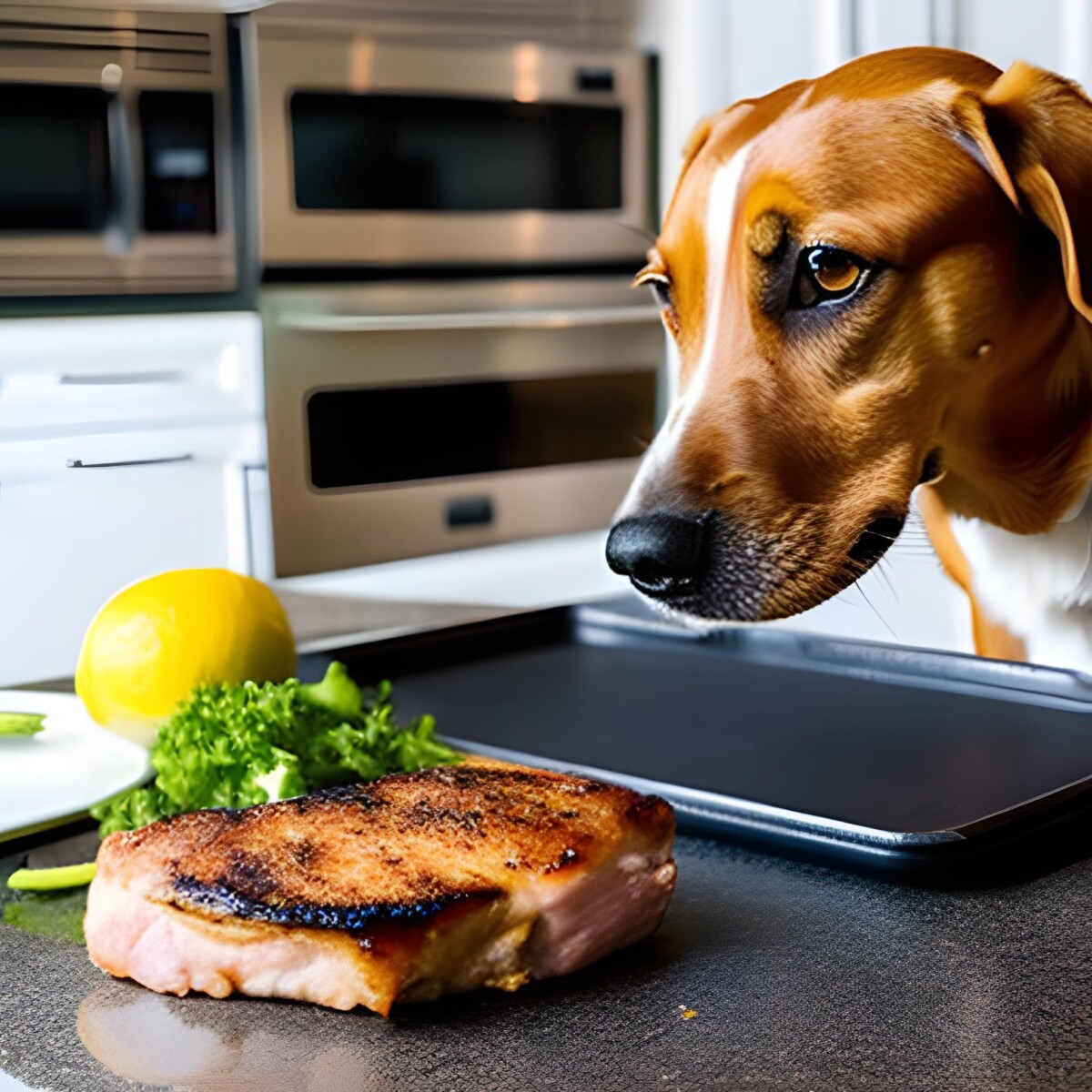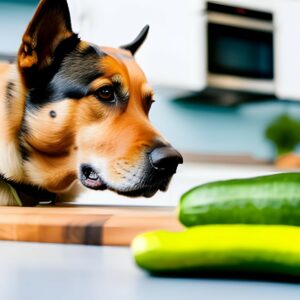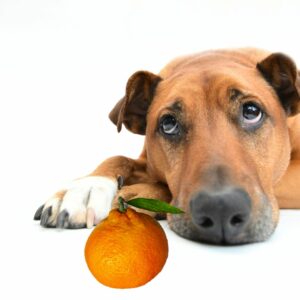Dogs can eat pork in moderation, but be cautious about the type of pork, its preparation, and portion control.
Lean, well-cooked pork can provide protein and nutrients, but fatty or seasoned pork poses health risks. Always prioritize your dog’s safety and well-being by consulting your veterinarian before making any dietary changes.
Read along for pros and cons, a recipe, and Vet Q&A.
Can Dogs Eat Pork: Table of Contents
Can Dogs Eat Pork Meat
Yes. Pork is a rich source of protein, which is essential for a dog’s muscle development and overall health. However, you should use lean cuts and thoroughly cook pork meat to eliminate any potential health risks associated with raw meat consumption.
Is Pork Safe for Dogs?
Feeding dogs fatty or seasoned pork can lead to digestive issues and even pancreatitis due to the high-fat content.
Cooked vs. Raw Pork: can dogs eat raw PORK
If you decide to feed your dog pork, opt for cooking methods that don’t involve excessive oil, salt, or seasonings. Boiled or baked pork without additional additives is a safer option.
Risks of Raw Pork Consumption
Raw pork consumption comes with the risk of bacterial contamination like Salmonella or Trichinella. These can lead to severe health problems in dogs, making it generally safer to stick to cooked pork.
Health Benefits of Pork for Dogs
Protein and Amino Acids
Lean pork contains high-quality protein and essential amino acids that contribute to your dog’s muscle growth, immune system, and overall energy levels.
Vitamins and Minerals
Pork consists of essential vitamins and minerals like B vitamins, zinc, and selenium. These nutrients play a vital role in maintaining your dog’s skin health, immune function, and overall vitality.
Risks and Concerns
High-Fat Content
The high-fat content in certain cuts of pork can lead to obesity, pancreatitis, and gastrointestinal issues in dogs. Trim excess fat and avoid fatty pieces.
Seasonings and Additives
Many seasonings and additives used in pork dishes can be toxic to dogs. Ingredients like garlic, onions, and excessive salt should be strictly avoided.
Moderation is Key
While pork can be a part of your dog’s diet, it should never replace balanced commercial dog food. Incorporate pork as an occasional treat and focus on a well-rounded diet.
Overfeeding pork can lead to nutritional imbalances and health issues. Always follow portion control guidelines and monitor your dog’s weight and overall condition.
Common Pork-Related Issues in Dogs
Pancreatitis
Pancreatitis is a common concern associated with fatty foods like pork. This condition can cause abdominal pain, vomiting, and lethargy in dogs.
Allergic Reactions
Some dogs may develop allergies to pork proteins, leading to skin problems, itchiness, and digestive disturbances. Monitor your dog for any adverse reactions after consumption.
Signs of Pork Intolerance
Digestive Upset
If your dog experiences vomiting, diarrhea, or other digestive issues after eating pork, it might be a sign of intolerance. Discontinue pork and consult your vet.
Behavioral Changes
Unusual behavioral changes after consuming pork could indicate discomfort or adverse reactions. Keep an eye out for lethargy, restlessness, or other abnormal behaviors.
Safe Pork Preparation
Choosing Lean Cuts
Opt for lean cuts of pork, such as loin or tenderloin, to reduce the risk of excessive fat consumption. Avoid fatty parts like bacon.
Cooking Thoroughly
Cook pork to an internal temperature of at least 145°F (63°C) to ensure the elimination of harmful bacteria. Undercooked pork can pose health hazards to dogs.
Alternatives to Pork
Canine-Friendly Protein Sources
If you’re cautious about feeding pork, consider alternatives like lean poultry, fish, or beef. These options offer similar nutritional benefits without the associated risks.
Recipe: Homemade Pork and Sweet Potato Stew for Dogs
Ingredients:
1 cup lean pork (cooked and diced)
1 sweet potato (peeled and chopped)
1/2 cup green beans (chopped)
1/4 cup carrots (chopped)
1 cup low-sodium chicken or vegetable broth
1 tablespoon olive oil
Instructions:
Cook the Pork: Start by cooking the lean pork thoroughly. You can either bake, grill, or boil it. Make sure it’s fully cooked without any seasonings or additives. Once cooked, dice the pork into small, bite-sized pieces.
Prepare the Vegetables: Peel and chop the sweet potato and carrots into small, dog-friendly pieces. Chop the green beans as well.
Cook the Vegetables: In a pot, heat the olive oil over medium heat. Add the chopped sweet potato, carrots, and green beans. Sauté for a few minutes until the vegetables start to soften slightly.
Add the Pork: Add the diced cooked pork to the pot with the vegetables.
Pour in Broth: Pour in the low-sodium chicken or vegetable broth to the pot. The broth will add flavor and moisture to the stew.
Simmer: Bring the mixture to a gentle simmer. Cover the pot and let it simmer for about 15-20 minutes or until the vegetables are tender.
Cool and Serve: Once the stew is cooked, allow it to cool down before serving it to your dog. Make sure the stew is at a comfortable temperature for your dog to eat.
Portion Control: Depending on your dog’s size and dietary needs, serve an appropriate portion of the pork and sweet potato stew. Remember, this is meant to be a treat or occasional addition to their regular diet.
Store the Rest: If you have leftovers, store them in an airtight container in the refrigerator for up to a few days. You can also freeze the stew in individual portions for longer storage.
Note: Always monitor your dog’s reactions and consult the vet if you notice unusual symptoms and behaviors.
Can dogs eat PORK rinds?
I don’t recommend pork rinds, but if choose to do so consider moderation. Pork rinds are a type of snack made from fried or roasted pig skin. They are high in protein and fat, which can make them appealing to dogs. However, there are a few things to keep in mind:
- Moderation: While pork rinds can be given as an occasional treat, they should not become a regular part of your dog’s diet. Too much fat in a dog’s diet can lead to digestive issues, obesity, and pancreatitis.
- Plain and Unseasoned: It’s important to offer plain, unseasoned pork rinds to your dog. Avoid giving them flavored or spiced varieties, as some seasonings can be harmful to dogs.
- Choking Hazard: Pork rinds can be crunchy and brittle, which might pose a choking hazard, especially for small dogs or dogs prone to gulping down food. Break them into smaller, manageable pieces before offering them to your dog.
- Allergies and Sensitivities: Like any new food, introduce pork rinds slowly to ensure your dog doesn’t have any adverse reactions or allergies.
Can dogs eat ground PORK?
Yes, dogs can eat ground pork, but there are some important considerations to keep in mind:
- Cooked and Unseasoned: If you’re going to feed your dog ground pork, make sure it’s thoroughly cooked. Raw pork can carry the risk of bacterial contamination. Additionally, provide plain, unseasoned ground pork. Avoid using any spices, seasonings, or additives that could be harmful to dogs.
- Moderation: Ground pork can be high in fat, which can lead to digestive upset or weight gain if consumed in large amounts. Feed ground pork to your dog in moderation and as an occasional treat rather than a regular part of their diet.
- Balanced Diet: While it’s fine to offer small amounts of ground pork as a treat, the main portion of your dog’s diet should come from nutritionally balanced dog food. This ensures they receive all the necessary nutrients for their health and well-being.
- Allergies and Sensitivities: Just like with any new food, introduce ground pork slowly and monitor your dog for any signs of allergies or sensitivities.
- Consult Your Vet: If you’re unsure about incorporating ground pork into your dog’s diet, it’s always a good idea to consult with your veterinarian. They can provide guidance based on your dog’s individual needs and health considerations.
Vet Q&A
Can I give my dog pork bones?
No, Giving your dog pork bones can be dangerous, as they can splinter and cause choking or internal injuries. It’s best to avoid them.
I would advise against feeding your dog cooked bones, pork chop bones, or bones in any form.
Best benefits from bones are in the stew, you can cook the bones and use the water as an addition to kibble.
Is pork better than other meat sources for dogs?
Each meat source has its benefits and risks. Pork can be a part of your dog’s diet, but it’s important to provide a variety of protein sources.
Can dogs have pork sausages or bacon?
It’s not recommended to give your dog pork sausages or bacon due to their high-fat and salt content, which can lead to health issues.
What should I do if my dog accidentally eats raw pork?
If your dog consumes raw pork, monitor them closely for any signs of illness and consult your veterinarian for guidance.
Is it safe to share cooked pork without seasoning with my dog?
Yes, plain, well-cooked pork without seasoning can be shared with your dog in moderation.
My Senior Paws is a participant in the Amazon Services LLC Associates Program, an affiliate advertising program designed to provide a means for sites to earn advertising fees by advertising and linking to Amazon.com. We also participate in other affiliate programs which compensate us for referring traffic.




